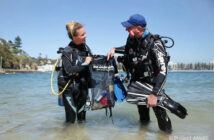The 1000 Islands is an archipelago of 1864 islands that straddles the Canadian and US border along the St. Lawrence River. The island chain begins at the northeast corner of Lake Ontario and meanders along an 80 km (50 mile) stretch of pristine waterway through some of North America’s most stunning natural landscapes. The islands vary from over 40 square miles to tiny islets just big enough for a cozy cabin tucked against their rocky edges. Famous features like Boldt Castle and Long Vue Island are talking points and tourist attractions rooted deeply in history and lore. Many islands remain in their natural state with signature species like bald eagles, trumpeter swans, and softshell turtles roaming freely. The geography is a mix of lush boreal forest punctuated by massive outcroppings of jagged Canadian Shield granite. The dichotomy between dense forest and exposed shoreline provides visitors with a unique blend of quiet sheltered coves nestled alongside towering coastline. There is privacy, nature, and impeccable views. With its cross-border appeal and longstanding recreational history, the 1000 Islands blends a rare natural beauty with a vibrant local culture unlike anywhere else in the world.
As the ‘cottage lifestyle’ and recreational pursuits took hold post-WWI, in 1934 the mayor of Gananoque, on the Canadian side, formed a protective association among local officials to police the islands during the harsh northern winters. Shortly thereafter, local residents banded together at Gananoque Town Hall to organize the Summer Residents Association to protect their idyllic waterways during the increasingly busy summer months. As a challenging waterway full of twists, turns, shallow water, and numerous shoals, the association developed a system of shoal markers and navigational aids to protect their playground while simultaneously spreading community awareness.
Today, the Thousand Islands Association carries on that original mission through a series of crucial programs to preserve the region. With tourist activity increasing and recreationists flocking to the area from across North America, the TIA now runs initiatives aimed to protect at-risk wildlife, increase environmental awareness, and maintain their vital Shoal Marker Program. The value of the TIA, and the popularity of the region at large, is obvious when considering that membership spans 46 US states and 9 Canadian provinces. From California to Florida in the US, and from British Columbia to Newfoundland in the north, many TIA members are generational with family cottages going back five or six generations. It’s fitting that those who love the region eventually come to protect it. For boaters, what makes the 1000 Islands so attractive are “the many options available to experience no matter what your cruising interests are. If you enjoy spending time at anchor, there are plenty of out-of-the-way spots where you can enjoy the sunshine or get protection from the weather. Of course, while you are here, the mooring buoys and docking facilities offered in the 1000 Islands National Park are great places to meet fellow boaters and enjoy one of Canada’s national treasures,” says Eric Sunstrum, president of the Great Lakes Cruising Club. Not surprisingly, the area has a rich boating history with several well-known boatbuilders serving as a cornerstone of the local culture and economy.
Boaters and other recreationalists looking to get involved themselves can take action in several ways. Peter Fitton, President of the TIA, says the group is open to all, and that “new members will discover the sense of community from Kingston to Brockville on the St. Lawrence River in the 1000 Islands and the role TIA plays in delivering on its mission: River Safety, Environmental Awareness, and Community Support. The TIA communication platforms including monthly e-newsletters and social media keep the member informed on topics of interest affecting the river community and encourage the member to become engaged with one another.”
One of the common misconceptions about the riverway is that Parks Canada or the Coast Guard maintains the shoal markers, but that responsibility falls solely to the TIA. With many tight passageways, variable depths, and hidden shoals, boaters must keep a watchful eye while underway. To help increase boater awareness, Mike Spies, Chair of River Safety for the TIA, says the Shoal Marker Program is a labour of love, albeit a large undertaking for a not-for-profit organization: “We install over 200 markers each year. Each shoal marker is 9” in diameter, 61” in height and weighs 50lbs. Shoal markers go into the water in early spring, usually late April, early May when the water temps are still in the high 40’s, low 50’s. In late fall, usually early October, the markers are retrieved, however having spent the summer in the water, they are now covered in a thick coating of algae making retrieving them slippery work. The colder water temps combined with unpredictable weather makes the work challenging. We hope for calm, sunny days to get the work done.”
The job of protecting the safety of boaters and the natural landscape is an ongoing effort, especially considering “every summer, and for various reasons, several markers break loose and need to be retrieved and repositioned. Last summer, TIA recovered and repositioned just over 25 markers or approximately 12% of our in-water inventory. Each fall, TIA removes all 200 markers in Canadian waters and stores them in several strategic locations, both on private islands and the mainland.”
With boating enjoying a record surge in 2021, the preservation of natural playgrounds like the 1000 Islands is paramount. For President Peter Fitton and their board of directors, the “TIA goals are created from the vision of TIA Board and the membership of the organization that are rooted in its mission statement. The TIA flagship program is placing shoal markers for the safety of the river community and going forward program development for environmental awareness will become a key component in response to protecting the natural beauty of the river and its wildlife.”
If you’re a visitor to the 1000 Islands and would like to get involved in preserving one of Canada’s richest boating playgrounds, please check out the Thousand Islands Association. You can also stay updated on the latest events by following them on Facebook, Twitter, and Instagram.








